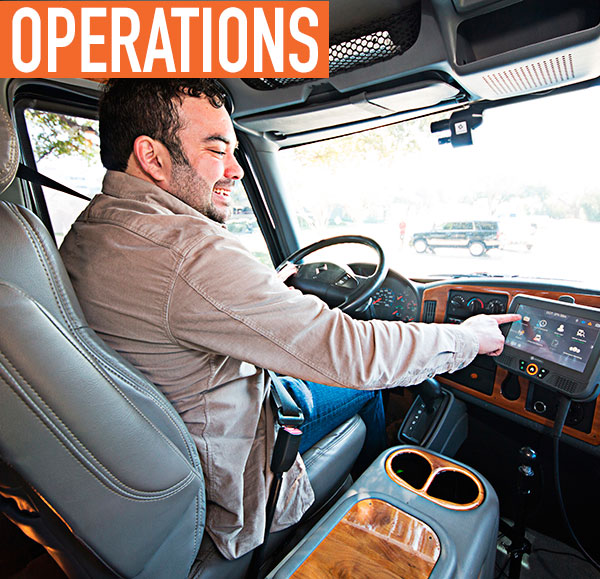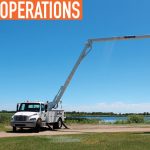In an industry where time is money and watching the clock can help a driver or his bosses avoid costly fines, we’ve got a question for you: Instead of watching the clock, are you watching the calendar?
There are just a few weeks remaining until the December 18 deadline for nearly all commercial trucks to be equipped with a compliant electronic logging device. And, though installing an ELD on a truck can be done relatively quickly, the sheer number of trucks not yet equipped with the devices is creating a last-minute rush.
That makes delaying an ELD decision very risky.
FINES COULD ADD UP
A little more than half way through the year, the total amount of hours of service fines levied against companies and drivers in 2017 was approaching $190 million, according to the calculator at www.eldfacts.com. Just think how much bigger that number will grow if/when trucking enforcement officials aggressively begin pulling trucks over for ELD Mandate spot checks after the deadline.
CVSA announced as of the compliance date they will still hand out violations for those that do not have AOBRD or ELD, but the Out of Service would be enforced starting April 1, 2018. That would render assets worth tens of thousands of dollars sitting for 10 hours and customers’ products loaded onto those trucks, undeliverable for however long it takes to get that truck equipped or it could get a second Out of Service.
Further delaying ELD installation won’t be an effective strategy. We can say that with very strong confidence because our industry intelligence tells us that a number of ELD and related equipment suppliers already are telling trucking companies that it’ll be 8 to 10 weeks—or even longer—before they can deliver ELD devices for installation. Why?
HIGH DEMAND
ELD devices are an important piece of technology for our industry, but they are just one relatively small piece in a broader technology world. They, like several million other technology-dependent products, are dependent on high-demand electronic components like high-density digital memory. Fleet management solution providers and their ELD manufacturers must compete against smartphones, 4K TVs, gaming devices, PCs and tablets, computer servers, automobile engine and system management systems, manufacturing equipment controllers, Bluetooth-enabled devices, fancy new Wi-Fi-equipped refrigerators, and countless other products for the finite number of memory devices that can be produced during any period of time by the world’s handful of digital memory manufacturers.
Worse, given the huge consumer demand for the digital memory-equipped devices that entertain us, make our lives run more smoothly, and even help keep us alive when our health is jeopardized, ELD manufacturers are relatively small customers. As a result, they may not always be high-priority customers of computer memory manufacturers, especially as consumer electronics and other big digital-enabled product makers release new products (aka Apple iPhone 8) and begin to build inventory in advance of the holiday shopping season.
For the Fleet management solutions provider that wasn’t looking ahead and preparing for that increased demand, they’re stuck, unable to manufacture an ELD product that people in their industry must have in order to be compliant.
Still, four weeks is a short period of time for a trucking operation—of any size, big or small—to make a wise selection among the various kinds of ELD-compliant devices available, get them delivered, and then get them installed—assuming their preferred provider can meet the demand.
And, that task won’t be made easier by the fact that those commercial vehicle operators who have waited this long to get into the game will be racing to beat the ELD compliance deadline during the trucking industry’s busiest time of the year, the holiday shopping season.
A further complication, at least for some trucking outfits, will be finding available garage time to complete the ELD device installations.
NOT ALL WORK TRUCKS
True, not every commercial vehicle in America must meet the December 18 deadline (go to the Federal Motor Carrier Safety Administration’s website—www.fmcsa.dot.gov—to learn which trucks are exempted from the ELD Mandate, at least for a year or two). But the vast majority of the nation’s commercial vehicles, from big Class 8 rigs all the way down to those Class 1 light trucks that are operated in interstate commercial service and whose drivers currently are required to track their hours of service on paper logs, are subject to the ELD Mandate.
Finally, even if an ELD device is installed in a truck by December 18, if that truck gets pulled over and the driver can’t demonstrate that he or she not only knows how to use the device but has been using it correctly since December 18, then that truck, that driver, and that operating company still could be subject to fines and other penalties under the ELD Mandate rules. So, driver training, while not difficult or hugely time consuming, must also be seen as a critical element in meeting the ELD Mandate.
The U.S. Supreme Court decided in June not to hear further arguments seeking to block or delay implementation of the ELD Mandate. And, Congress rejected, by a wide margin, in early September a seemingly last-ditch effort to push back the December 18 deadline. So, for trucking operators, truck owners, and drivers who’ve yet to get compliant with the ELD Mandate, the sky really is falling, sort of. And, they’re running out of time to act.
ABOUT THE AUTHOR:
Tom Neppl is the Omnitracs vice president of hardware solutions. Find out more about the ELD Mandate at www.fmcsa.dot.gov/faq/what-exceptions-are-allowed-electronic-logging-device-rule.
_______________________________________________________________________
MODERN WORKTRUCK SOLUTIONS: NOVEMBER 2017 ISSUE
Did you enjoy this article?
Subscribe to the FREE Digital Edition of Modern WorkTruck Solutions magazine.
![]()




